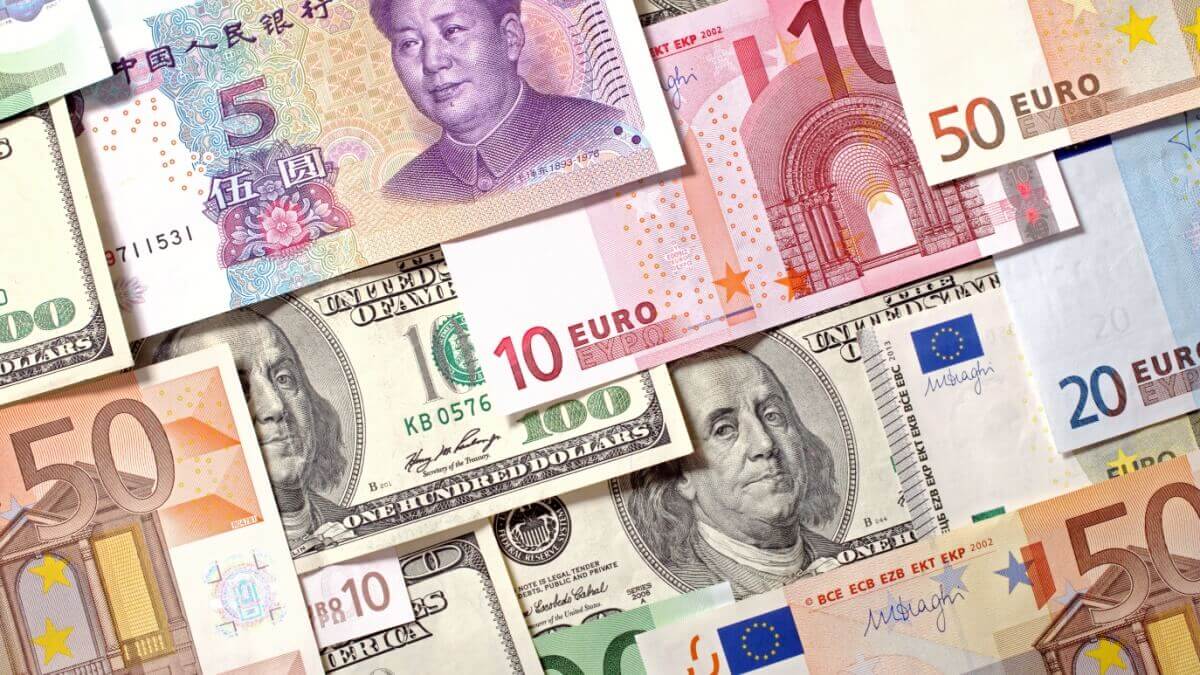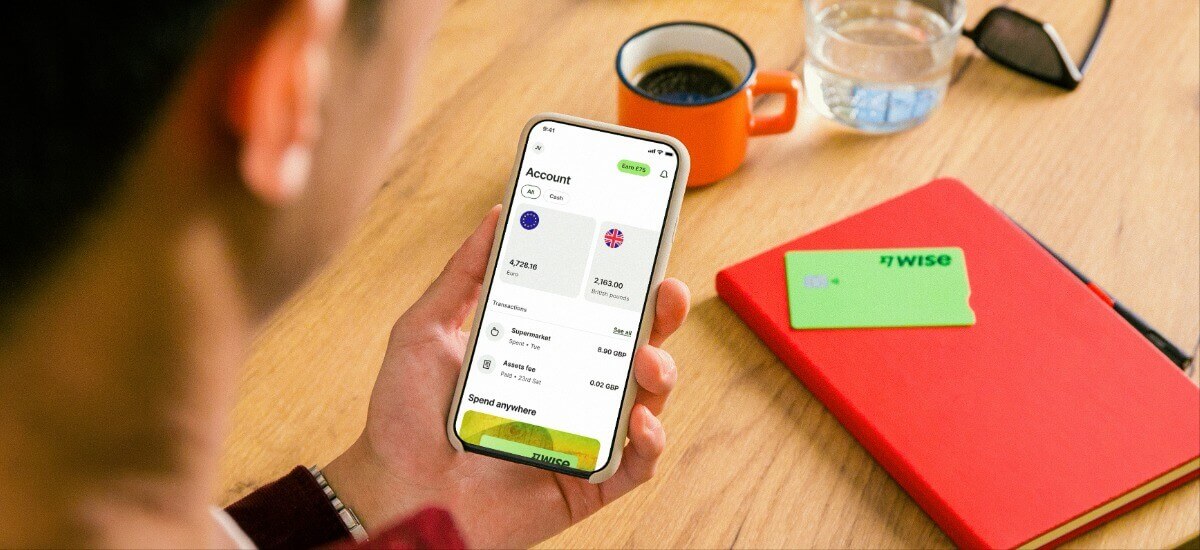How to delete your Paysend account: US guide
Need to delete your Paysend account? Our guide covers requirements, fees, steps, timelines, and best practices to avoid errors and protect your money.

An international wire transfer is a convenient way to send money outside the US – but the costs can add up.
In our guide, we take a look at how to avoid international wire transfer fees, including exactly how much wire transfers cost and how to save money on global payments.
We’ll also look at Wise vs international bank transfers. Use your Wise account to send stress-free worldwide payments without exchange rate markups at just the touch of a button.
| Table of contents |
|---|
An international wire transfer is a secure, fast, and convenient way to send large payments abroad electronically.
However, you may need to pay a fee for your wire transfer – and international wire transfers often cost more than domestic ones. Let’s take a closer look.
So, exactly how much does an international wire transfer cost?
You’ll typically pay a flat fee to your bank or international money transfer provider to send a wire transfer. An outgoing international wire transfer can cost anything from around 5 USD to 75 USD, depending on your bank.
Some banks may also charge a fee for you to accept an incoming international transfer – and this typically costs up to 25 USD. In some cases, you may even get your wire transfer for free. It all depends on your provider.
You’ll also need to think about intermediary bank fees. Every time your international wire goes through another bank, that provider may charge an extra processing fee.
This is pretty common with international payments – and your recipient’s bank may also charge an additional fee for facilitating your wire.
An exchange rate markup is an added margin on the mid-market exchange rate. This is the standard rate, but many banks add an extra charge to make money from your transaction.
Some banks will waive your outgoing wire transfer fee if you send funds in a foreign currency. However, if you have a USD bank account, your provider may charge a fee to exchange your money into a foreign currency.
For example, Wells Fargo makes a profit when you convert from one currency to another. They set their own exchange rate, including a markup.¹
The price of your outgoing or incoming international wire transfer may depend on a few different factors, such as your bank, payment currency, and where you want to send your transfer.
Let’s take a look at how much it costs to send and receive a global wire transfer with many popular US banking providers.
| Bank | Incoming international transfer | Outgoing international transfer |
|---|---|---|
| Bank of America | 16 USD per transfer | 35 USD per transfer in a foreign currency² |
| Capital One | 0 to 15 USD per transfer – it depends on your account³ | 40 USD per transfer⁴ |
| Charles Schwab | No fee | 15 USD per online transfer⁵ |
| Chase | Up to 15 USD per transfer | 5 USD per online transfer in a foreign currency 40 USD per online transfer in USD⁶ |
| Citibank | 15 USD per transfer | 0 USD per online transfer in a foreign currency 35 USD per online transfer in USD⁷ |
| Discover Bank | No fee from Discover 20 USD currency exchange fee applied by the intermediary bank | 30 USD per transfer⁸ |
| HSBC US | No fee – intermediary bank fees may apply | No fee⁹ |
| Huntington | 15 USD per transfer | 75 USD¹⁰ |
| Navy Federal | No fee | 25 USD¹¹ |
| PNC | 15 USD per transfer | 5 USD per transfer in a foreign currency 40 USD per transfer in USD¹² |
| Regions Bank | 18 USD per transfer | 45 USD per transfer¹³ |
| TD Bank | 15 USD per transfer | 50 USD per transfer¹⁴ |
| Truist | 20 USD per transfer | 65 USD per transfer¹⁵ |
| USAA | No fee – intermediary fees may apply¹⁶ | 20 USD to USAA and 25 USD as a correspondent bank fee¹⁷ |
| US Bank | 25 USD | 50 USD¹⁸ |
| Wells Fargo | 15 USD per transfer | 0 USD per online transfer in a foreign currency Fees start at 25 USD per transfer in USD¹ |
Sending a wire transfer overseas can be expensive. Let’s take a look at how to avoid wire transfer fees for big international payments.
If you’re sending your wire transfer in a foreign currency, make sure to research exchange rates.
Every provider will offer a slightly different exchange rate for currency conversions, so look out for one that’s close to the standard mid-market rate to avoid a markup on your money.
Remember that exchange rates fluctuate depending on when you send your transfer, so it might be worth tracking your bank’s rate to see if anything changes.
| 💡 Wise’s pricing calculator can help you work out the best exchange rate at the time of your transaction – including any fees you’ll need to pay. |
|---|
Some banks offer discounts and offers if you meet certain conditions, such as a wire transfer limit.
For example, Chase offers free international wire transfers if you send 5000 USD or more online in a foreign currency.⁶ For this reason, it may also work out cheaper if you make one big payment, instead of lots of little ones.
Many providers may also offer a special promotion if you switch over to their services – or if this is your first international wire transfer. Consider all your options before sending money abroad.
Many US banks charge less for online wire transfers, as these payments don’t cost as much to process. Try sending your transfer via online banking or your bank’s mobile app.
For example, providers like Citibank or Wells Fargo waive their outgoing transfer fee for online wires in a foreign currency.
Before you make an international wire transfer, consider choosing a different payment method.
You could send an international ACH transfer to your recipient. This is an electronic bank transfer, like a direct deposit. It’s easy to set up an ACH, but many banks limit how much you can send.
Peer-to-peer apps like Wise can also help you make fast transfers abroad without expensive foreign transaction fees.
If you send regular international wire transfers in a foreign currency, such as CAD, GBP, or EUR, why not open an account in that currency?
This could help you avoid exchange rate charges, but you’ll need to do your research, as some banks don’t offer multi-currency accounts.

A smart option if you’re sending money overseas: meet Wise.
Register a Wise account online or in the Wise app on iOS and Android, and send money to 160+ countries, with the mid-market exchange rate and low, transparent fees.
Wise always shows you the amount you’re paying and how much your recipient will get — and you can even compare against other providers on the Wise app or desktop site.
If another service is cheaper for your particular payment, you’ll be shown — so you can’t lose.
| See how Wise compares with international bank transfers in our full guide |
|---|
Please see Terms of Use for your region or visit Wise Fees & Pricing for the most up to date pricing and fee information
Make sure to research your options before sending your wire transfer. Look for the best exchange rate, read your bank’s fine print, and open a foreign currency account to avoid added charges.
If you want to avoid a hefty wire transfer fee, you’ll need to shop around before choosing your wire transfer provider.
There are a few banks with no international wire transfer fees. HSBC US doesn’t charge for incoming or outgoing wires, but intermediary bank fees may apply.
Other providers may not charge international bank transfer fees if you meet their criteria, such as paying by digital banking or transferring in a foreign currency.
Some banks offer international wire transfers at a low cost. For example, PNC Bank and Chase only charge 5 USD for foreign currency wire transfers.
You can accept an incoming international wire transfer from Charles Schwab for free – and you can send free wire transfers with Citibank and Wells Fargo if you use a foreign currency.
However, even if you don’t pay a flat fee for your transaction, you may still pay an exchange rate markup to convert your dollars into a foreign currency.
Paying by wire transfer is an easy way to send large payments abroad. However, you’ll need to consider the cost of your transfer, including currency conversion charges and bank fees.
Avoid international wire transfer fees by doing your research in advance. Look into your bank’s exchange rates or choose a transparent peer-to-peer transfer platform.
To start sending international wires and global transfers to over 160 countries – all at the mid-market exchange rate – check out Wise.
🚀 Start saving on
international transfers
Sources:
Sources checked 08.29.2024
*Please see terms of use and product availability for your region or visit Wise fees and pricing for the most up to date pricing and fee information.
This publication is provided for general information purposes and does not constitute legal, tax or other professional advice from Wise Payments Limited or its subsidiaries and its affiliates, and it is not intended as a substitute for obtaining advice from a financial advisor or any other professional.
We make no representations, warranties or guarantees, whether expressed or implied, that the content in the publication is accurate, complete or up to date.

Need to delete your Paysend account? Our guide covers requirements, fees, steps, timelines, and best practices to avoid errors and protect your money.

Need to delete your Sendwave account? Our guide covers requirements, fees, steps, timelines, and best practices to avoid errors and protect your money.

Wondering is EverBank safe? Our full guide explains security features, fraud protection, FDIC coverage, and tips to protect your money and data.

Wondering is Santander safe? Our full guide explains security features, fraud protection, FDIC coverage, and tips to protect your money and data.

Wondering is Vanguard safe? Our full guide explains security features, fraud protection, FDIC coverage, and tips to protect your money and data.

Wondering is TD Bank safe? Our full guide explains security features, fraud protection, FDIC coverage, and tips to protect your money and data.